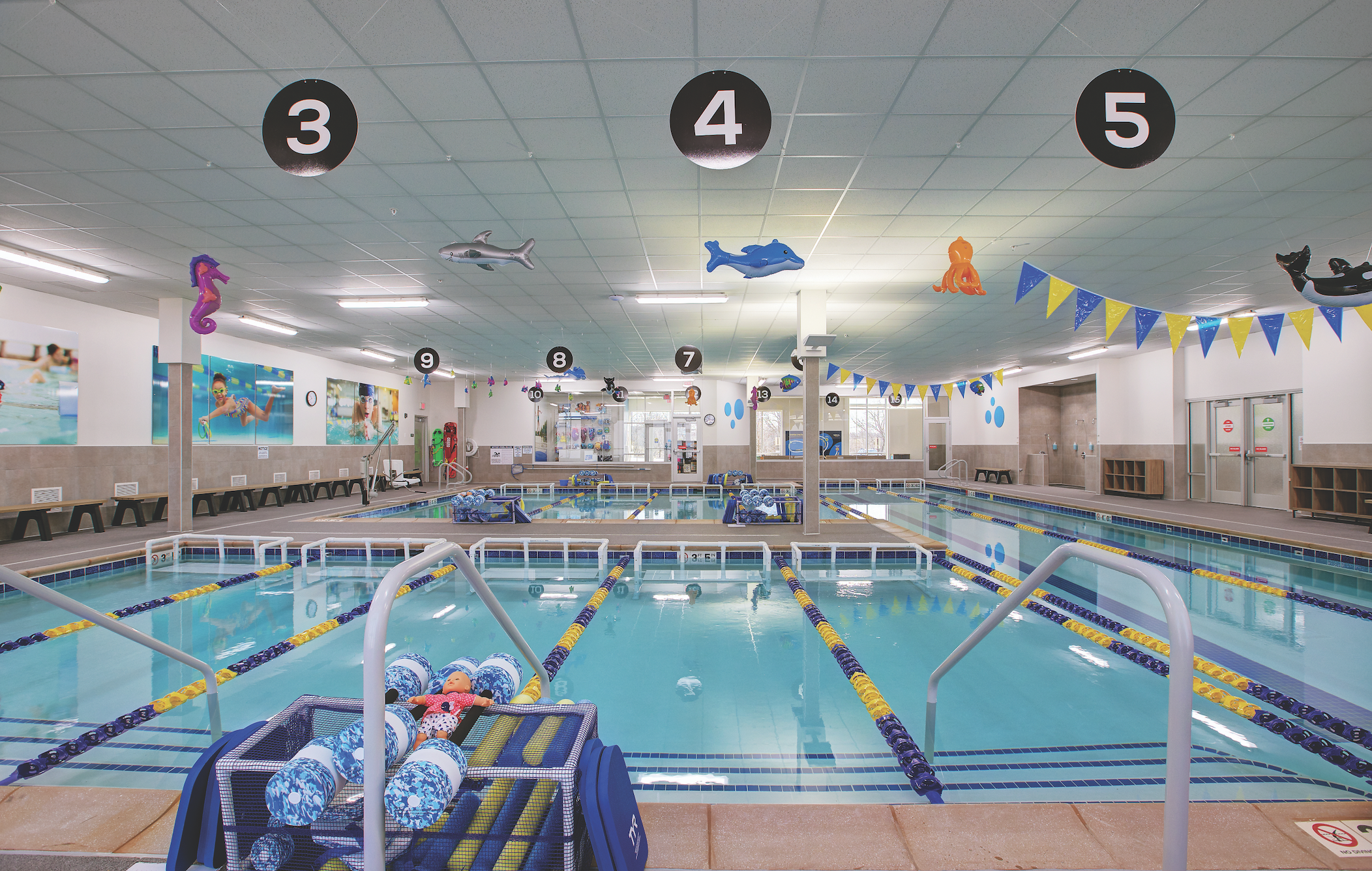Maybe you had an uncle who said the best way to teach kids to swim is to throw them off a raft into 10 feet of water. Or a neighbor who insisted children can learn all they need in water 24 inches deep. Like many aspects of learning to swim, there are a variety of opinions on the best water depth for learning swim skills. But at Foss Swim School, we only get to design and build our pools once. So here are some of the factors that went into determining the ideal pool depth for students following the FOSS Swim Path.
About Foss Swim School Pools: Designed for Teaching, Learning and Safety
Unlike lap pools designed for distance swimming, or recreational pools designed for splashing and jumping, FOSS pools have many features meant to aid learning. A peninsula jutting into many of our pools allows us to section off areas of different sizes and lane lengths so classes aren’t on top of each other. It also means no part of the pool is very far from an edge. Moveable islands and barriers allow further segmentation and let us create custom courses for different skills.
The depth of a typical FOSS pool is four feet, or 48 inches, with broad steps in at least one area that can be used for gradual introduction to water. Some people see this and think we are a shallow-water program. In fact, we would think of ours as a “deep-enough” approach – because water depth, especially when teaching children, is very much relative.
Why we think four-foot water depth is ideal
Looking at the components of our program, the need to ensure swimmer safety, and the ages of our students, FOSS determined that four feet was right in the sweet spot for many of our objectives:
-
Teacher mobility and leverage:
Adult teachers, of course, generally have no problem standing in four feet of water. They can move as quickly or slowly as needed, and can help support and position kids as they learn skills. From a safety perspective, they can reach kids anywhere in the pool in moments to offer aid.
-
Deep enough to ensure kids learn to navigate deep water:
Most young kids can’t touch in four feet of water. Our program teaches skills like floating up, turning in water to get back to safety, and flipping to breathe. All of these require water too deep to stand in (or at least stand in easily).
-
A good depth for islands and barriers:
There are times where we want shallower water where kids can sit and stand easily. Our submerged islands let us create a shallow spot in the middle of a lane or pool area, letting us teach skills that include swimming to that island. Working from a four-foot depth is practical when it comes to setting up and moving islands and barriers.
-
Deep enough for more advanced swimmers:
Our older swimmers generally can touch in a four foot pool, but in those levels we aren’t concerned that they might “cheat” and push off the bottom during a skill. These older swimmers are working on form and turns, and four feet gives them a great depth to work with while allowing the teacher to stand in the water and offer direction.
The four-foot number isn’t magic, and you may see variances of a few inches in some of our pools. But for the reasons described above, we feel strongly that there is a proper water depth for the teaching of swimming, and that depth is “deep enough.”
Thanks for taking the time to learn more about the details of the Foss Swim School way of teaching, and we’ll see you at the pool!
